All the entry range IP Cameras tend to look similar. The Tenvis IPRobot3 is a welcome exception...
Tenvis have their range of Foscam-like cameras but with the IPRobot2 and now the IPRobot3, they introduced something new. It's not only the external look, the software is completely different from what I've seen so far from Foscam, Wansview, Dericam and the likes. The camera is based on
GM8126 (ARM9 board) which seems increasingly used by the newer HD cameras (
Foscam, Neo-Coolcam...)Before buying, I checked their web site and was surprised to find a forum that appears to be actually operational and active. They also seem to release firmware updates on a regular basis.
Some highlights:My unit came with the firmware version 1.1.3.2 and upgraded to 1.1.6.2. Although I'm quite used to perform firmware updates, I had a hard time with the provided Batch Upload utility. Upgrading from the camera interface was finally easier. I've seen people reporting the exact opposite...

The presence of a RS485 connector for alarm I/O control at the back also indicates the absence of
IR LED manual controls.
It's a common fact for IP Cameras, the internal wiring and the button (lamp icon) are dedicated to one (alarm I/O) or the other (LED control).
For instance, the low-res
IPRobot2 offers the opposite: no RS485 but IR on/off control. So unless you rewire it yourself, this camera is not the best candidate for sitting behind a window.
The 4.2 mm lens gives a slightly wider fish-eyed view than average.The microphone is very sensitive and
the device can be set to trigger an alarm on sound detection. A great point for parents wishing to use it as a baby cam!
The image can be divided in several detection zones, and masks can also be defined to hide things you don't want to share with other viewers (PTZ should be disabled for such viewers since the mask moves with the camera)

The embedded speaker is very loud and clear and, at first, it all looks great for 2-way communication, but unfortunately using both speaker and mic. together produces a bad Larsen effect straight away. Plugging an external speaker and placing it away from the unit does help. It is a pity though that Tenvis did not include a volume control in the interface.
There's a Micro-SD card slot but little freedom on what to do with it.The memory card is only used as a buffer when the network is not available, and whatever is stored on it gets moved to the network storage when a connection is resumed. Upload to LAN can be done using FTP, NFS and Samba/CIFS (although I couldn't make this one work).
The Playback section of the interface gives access to Local (PC drive, not the SD card) and Remote files (the Mini-SD).
There is not way to access the camera via FTP but it's of little interest given the way it uses the memory card.
The camera runs a telnet service but it is restricted to Tenvis tech. only (secret login).
Length and size limit can be controlled quite well for the video files generated.
The .V264 format (which is not the standard .h264) of these files requires the PC Windows program V264Player.exe provided to be played... The network connection in 802.11n was stable so far despite the small detachable 2dB antenna.
Compatibility:The IPRobot3 is partially compliant with the
ONVIF protocol.
I say partially because I could not use all the features, like
PTZ controls and this is probably why Tenvis does not advertise this point.
It allows however 3rd party camera clients like the Synology Surveillance Station or the
Onvif device manager to access the video stream.
Other standards used are Pelco-D protocol for PTZ control, and P2P which allows a
plug-and-play access (automatic detection) from any P2P client.
Update 12/12/12: It appears that using the Generic_ONVIF From Synology Surveillance Station often leads to crashing the camera, it is advisable to choose [User Define] as Brand and build the url based on videostream.cgi documented lower. Leave Username and Password fields empty since they will be part of the URL for "Source Path".
Smartphone applications like
IP Camera Viewer support IPRobot3 directly with PTZ, "Listen", and Presets.
While this camera uses a
Quicktime plugin for Non-IE browsers, it remains possible to intercept the video and audio stream (in VLC for instance) in various ways:
Intercepting the A/V stream:rtsp://user:password@ipcamURL:port/0/
followed by...
video0 is for the 1280x720 stream,
video1 for 640x480 and video2 for 320x240 (unless specified otherwise under the Encoder Parameters).
av0, av1, av2: same but for audio+video
audio for audio only
 Example: rtsp://admin:admin@192.168.1.1:80/0/av1
Example: rtsp://admin:admin@192.168.1.1:80/0/av1 will request the audio and video from the secondary stream.
(source: http://forums.whirlpool.net.au/archive/1939748)
For snapshots: http://ipcamURL/
snapshot?strm=0 (or =1, =2), just press the snapshot button using a non-IE browser to see this.
None of the information above was available from Tenvis unfortunately.
Update: on December 7, Tenvis published the
streaming instructions on their blog, well done!
Little problem... I spent some time fiddling with the upload settings (located in "Record on SD > Network Storage") and could make FTP work. CIFS never worked (Didn't test NFS as I don't enable it on my NAS).
But the real problem came after: playing too much with this section of the interface crashed the IP Camera.
I had to power it off, and re-enter all the configuration (except the user part). In such a situation,
the absence of configuration backup/restore is regrettable!I also sometimes see that the picture is in black and white during the day, which is due to the night view mode triggering way too easily!
Conclusion:Although there's room for improvement, the Tenvis IPRobot3 is a surprising device that complies with standards normally found in more expansive IP cameras. The interface can be somewhat more confusing than average, and also can be slow and unstable at times. I'd wish to see more advanced information available on their web site, like the streaming examples above.

The 720p image, while not the most colourful, is sharp and a bit wider than usual. I made some
comparative snapshots.
Tenvis offers a real Technical Support and Forum and releases regular updates so let's hope that this young model will evolve to its full potential.
Pros:- 4.2mm lens provides a wider view
- Alarm interface (RS485 connector) with possibility to set parameters from the user interface
- ONVIF compatibility for video streaming
- Multi-zone detection configurable from the Web interface
- Masks (to hide part of the image) can be defined
- Sound detection can be used to trigger the alarm
- Supported by Robert Chou's IP Cam Viewer (Android/iOS/BlackBerry)
- Tenvis has an active customer support service including their own forum.
- Programmable automatic reboot
(2014 update) - After dealing with many ONVIF compatible cameras, it turns out that the IPRobot3 (old and 2013 models) despite all its flaws, has the most complete ONVIF implementation -with PTZ and audio- when it comes to works with Synology Surveillance Station, So it is an ideal candidate for that kind of use.
Cons:- No backup/restore function for configuration.
- No Log
- Two-way use of audio impossible due to Larsen effect
- No volume control for the (loud) speaker
- Would be nice to have an extended ONVIF compliance (for controls)
- Would need an option to keep some recordings (videos) on the SD Card.
- Somewhat picky on microSD cards used.
- Stability problems at time.
- Tends to stick in night mode (IR and B/W picture) even in full indoor light.
- Proprietary .v264 video format requires Windows (only) program to view.
See also:Tenvis IPRobot
updated manual.
Tenvis
forum


















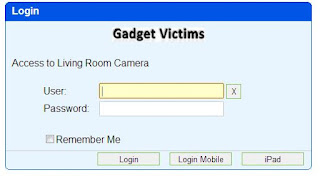


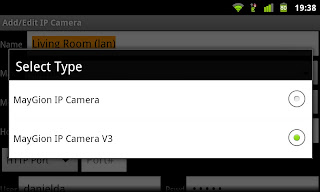

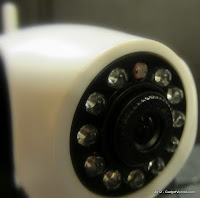




2GB.jpg)








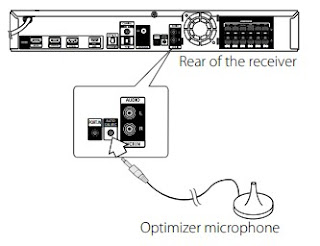


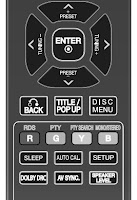

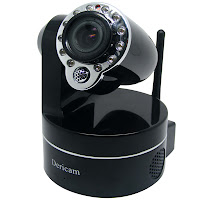








.jpg)






